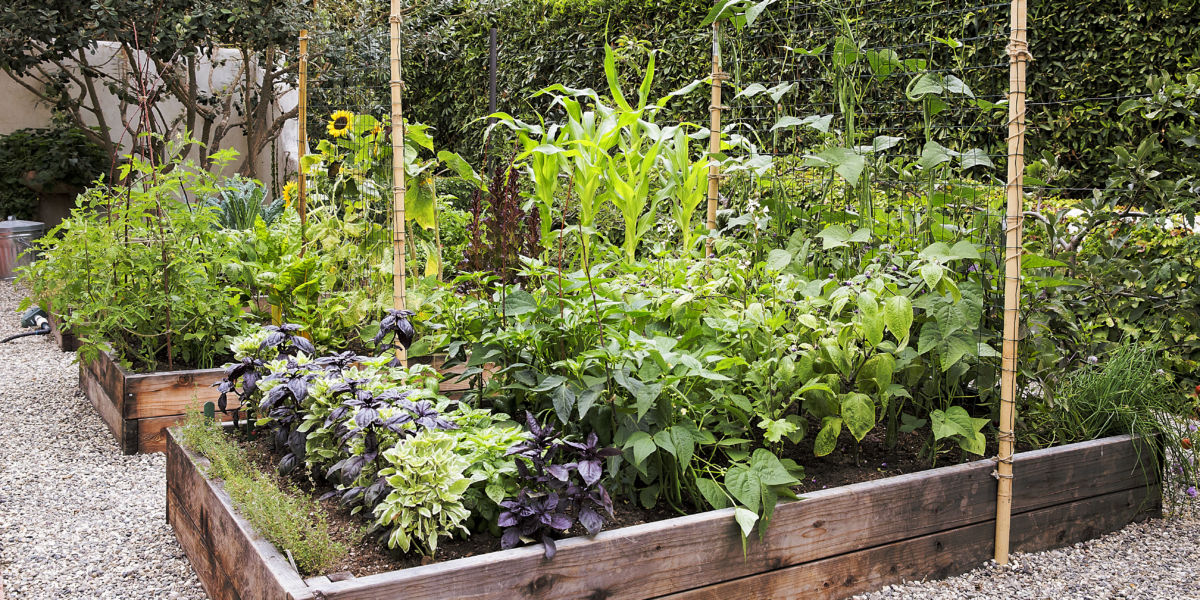
Time-Saving Hacks for Raised Beds
Whether you’re short on time, patience, or construction skills, a vegetable garden with raised beds isn’t out of reach. Here are some time-saving hacks to make it happen.

We only recommend things we love. If you buy something through our site, we might earn a commission.
Who’s never thought of growing fresh vegetables in the back yard? If you haven’t before, we bet the recent state of supermarket shelves has got you thinking that maybe this is the spring you put in those raised beds.
But we get it: There are hurdles. Building a classic raised bed takes time, money, and some degree of handiness. And that’s just the beginning. Then you’ve got to keep those little seedlings alive, and we’re not all blessed with a green thumb. A confession: I’ve worked for Sunset for years and have a backyard full of mostly dandelions for those exact reasons.
If you’re good with a hammer, and have some time on your hands, go ahead and build yourself some large, sturdy raised beds from scratch. Here’s how.
But if you’re like the rest of us, read on. It turns out there are some shortcuts you can take to get your vegetable production up and running fast. Here are a few of our favorite alternatives to the traditional hand-built raised bed.
If You Have a Big Yard
Gardener’s Supply Company sells wide cedar planks with all the hardware you need to put them together into tall raised beds (pictured above). The kits are lauded for their ease of assembly. They come in a range of sizes, and while the 4×12-foot bed is not cheap, 48 square feet is a lot of growing space and these beds will last for years.
This stair-step fir bed can come apart to make three separate planters if you want, but we love the cascading look. It comes disassembled but is easy to put together. There’s no bottom, though, so you’ll need to place it on top of dirt or grass.
If You’re Short on Outside Space
The Foreman Garden Bed Planter Box has a bottom and is elevated on legs, so it can be placed anywhere, even on concrete or a wooden deck. At three feet long by two feet wide, there’s a lot of growing space, and assembly doesn’t even require tools. It’s the perfect choice if you have room for more than a decorative planter box but don’t want to commit a big part of your yard to being a permanent bed.
You can go fully portable by raising plants in grow bags. These sturdy ones from Vivosun come with strong handles and the 30-gallon size is big enough to support a small tree. Even if you think you might have space for a classic bed, these containers are a good way to go if you are just starting out and have any uncertainty about which part of your yard has the best light for the crops you want to grow—just move them around until you find your veggies’ happy place.
If You Don’t Have a Backyard at All
Apartment dwellers, we’ve got you. Container plants are always a good option, but we love this product, too. The Click & Grow Smart Garden uses LED grow lights and pre-packaged pods to grow herbs and small vegetables indoors. It’s self-watering, and comes with basil pods. You’re not limited to that, though; you can choose from more than 50 plant varieties, from lavender to chiles.
Plant Starts
Now you’ve got a place to put your garden. That’s a big accomplishment, but you’ve still got to make those plants grow. If you’re patient you can of course start your garden from seeds, bulbs, or even food scraps. But consider buying starts, small plants that have already germinated and gotten past their most fragile early phase. They cost more than seed, but you don’t have to worry about coaxing sprouts to life or the slightly heartbreaking task of culling shoots when too many take hold in one place. You also don’t have to hit that perfect planting window for seeds. Buy starts, and relax in the knowledge that someone else took that crucial first step of getting seeds in the ground at the right time.
